

THE SATANIC HIP-HOP INDUSTRY
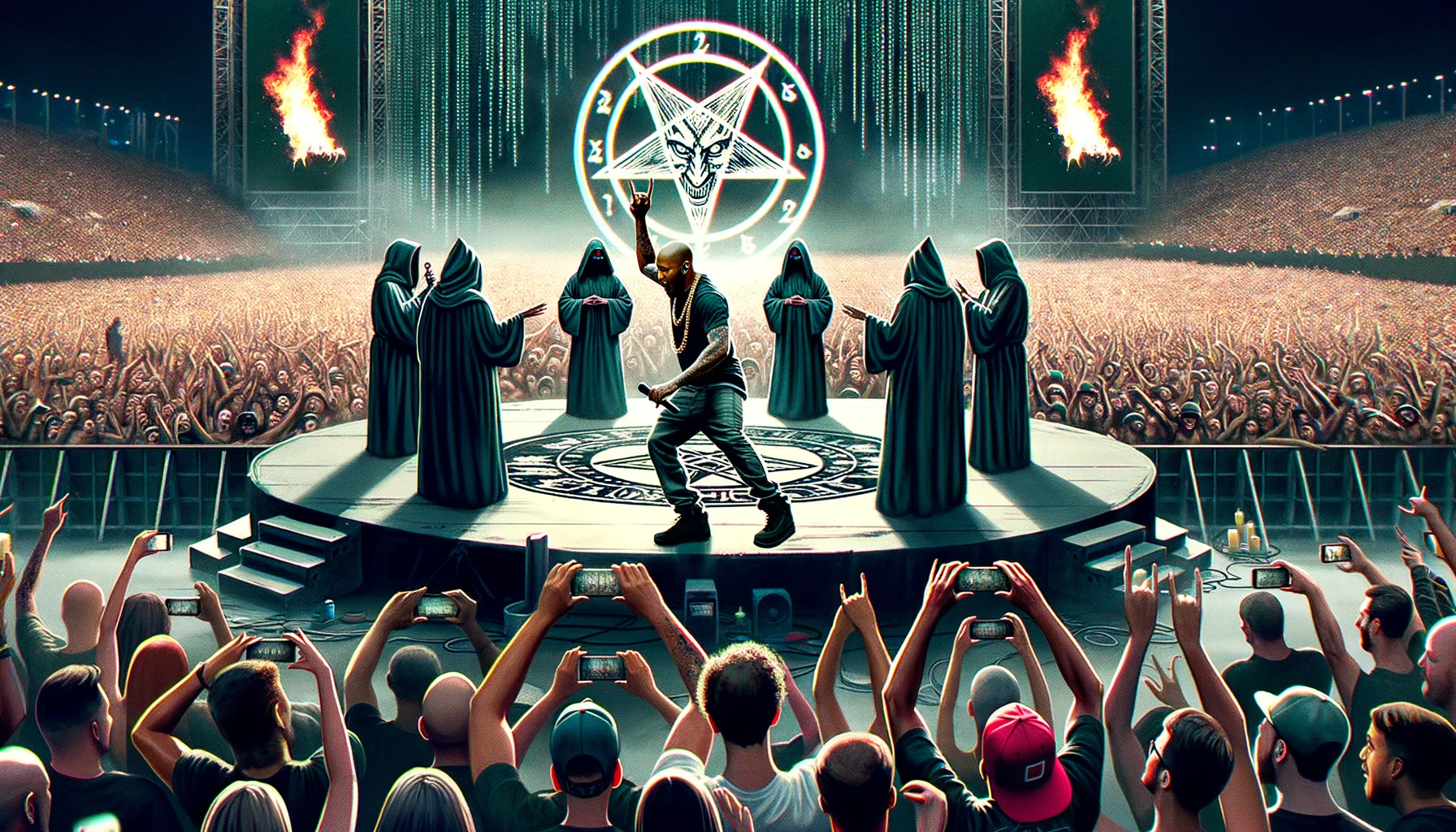
Join the Truth Mafia today and unlock exclusive benefits. Gain access to members-only live events, video uploads, live webinars, our private group on TruthMafia.com, and our secure, encrypted WhatsApp group for real-time communication.
https://truthmafia.com/jointhemob
The All-seeing Eye: The Sacred Roots of a Co-opted Symbol
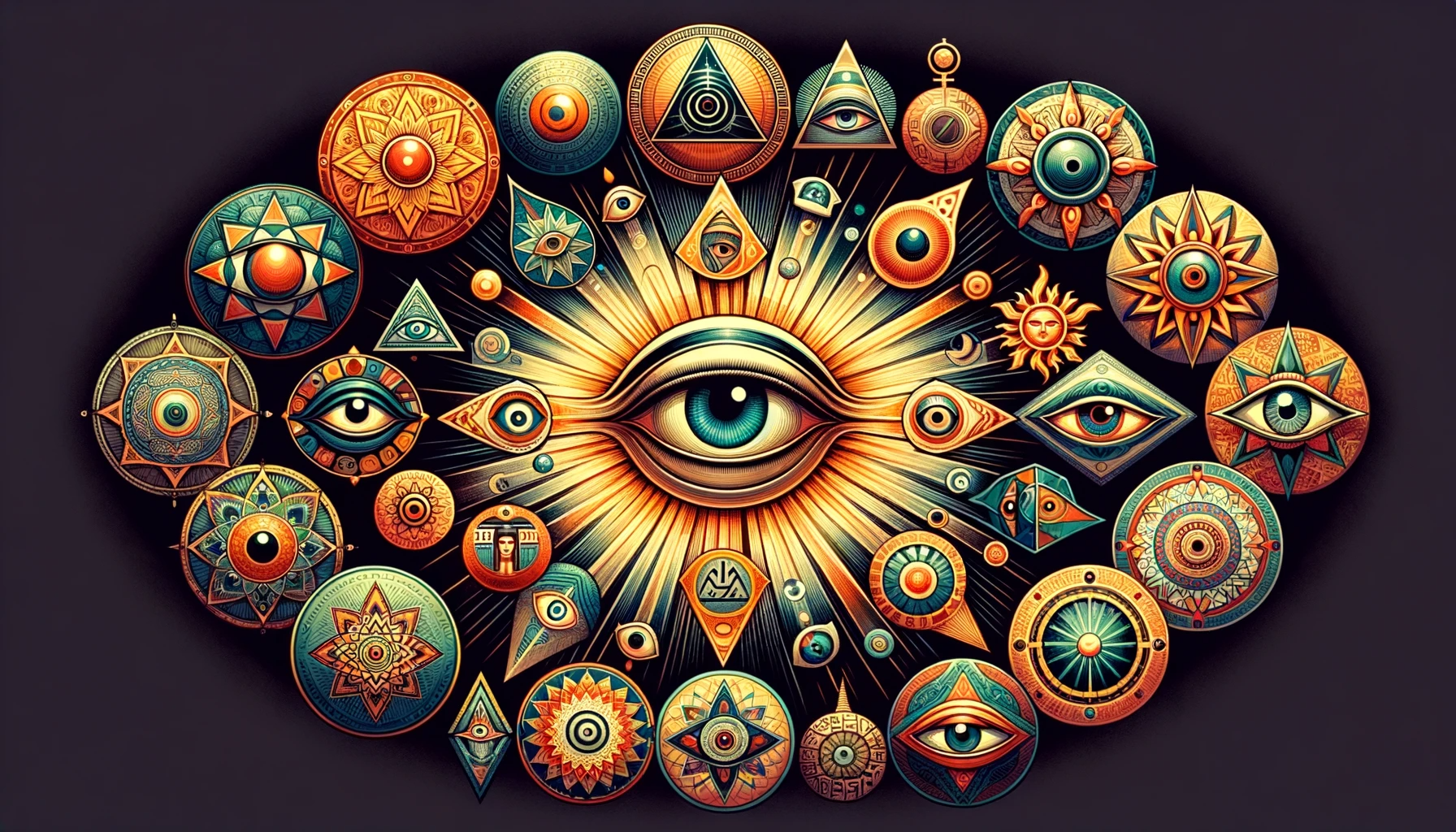
The all-seeing eye was once a sacred and holy image that has been taken by the elites who have inverted it and attached negative energy to it. They use a technique called inversion, similar to what they have done with the numbers 33 and 666 – demonizing them and attaching negative vibrations to their energetic signature. In this discussion, we will explore the origins of the old seeing eye and reveal the truth about it before it was bastardized by the elites.
Is the All-seeing Eye eye emblematic of holy insight or an ominous influence? Nowadays, it embodies power and dominion from unseen authorities. However, its initial use was far more benign. Delving into its history, this article uncovers its ancient origins as a beacon of divine care and an emblem of profound spiritual realization.
The Dilution of Valuable Symbols
Today, the omnipresent eye, rich in esoteric significance, faces widespread misinterpretation and misuse. Its foundational representation was of a supreme spiritual entity or God overseeing humanity, or the awakening of an internal spiritual entity. Modern interpretations, however, have deviated significantly.
Now, this symbol is often linked with the “Illuminati”, suggesting elite control and oversight. This shift arises from malevolent forces overtaking and manipulating symbols that once epitomized uplifting spiritual themes. The omnipresent eye showcases how sacred symbols can be inverted and their meanings distorted. Unfortunately, not enough effort has been made to unearth its genuine meaning or revive its original spiritual resonance.
This article initiates a series where I explore the origins and evolution of various symbols, aiming to reclaim their true esoteric significance and restore their historical reverence.
The Timeless Essence of Symbols
Symbols have perennially facilitated human expression of complex ideas succinctly. As the saying goes, an image conveys a thousand words! Though ancient esoteric symbols remain relevant today, their meanings uses, and origins often lead to confusion.
While our daily life is peppered with symbols, like traffic signs or company logos, they are especially potent when conveying intangible, spiritual concepts.
Among all, the omnipresent eye stands out as one of the most impactful yet misunderstood symbols. This piece traces its roots from ancient times up to the 18th century, showcasing its true essence. A subsequent article will further explore its transformation post-18th century Freemasonry.
Ancient Civilizations and the Omnipresent Eye
India: Shiva’s Enlightened Vision
The ancient Sanskrit text, the Rig Veda, possibly over 3,000 years old, might hint at the earliest form of the omnipresent eye. It describes the sun and various deities as heavenly eyes, ever-watchful creators, and sustainers of life.
This symbolizes an elevated state of awareness achievable by spiritual practitioners.
The deity Shiva in Hindu mythology possesses a third eye, representing supreme knowledge. This eye, when opened, annihilates all that it perceives. Symbolically, it eradicates ignorance and malevolence.
Likened to the emergence of a higher spiritual consciousness, this “creative destruction” eradicates negativities, paving the way for elevated consciousness.
Modern usage of Shiva’s eye in adornments aims to ward off malevolence, bestowing its wearer with insight and understanding, leading to positive spiritual evolution.
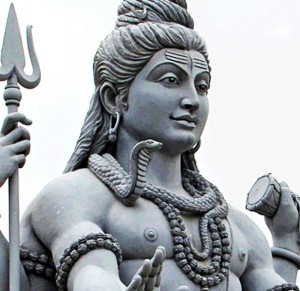
Nepal: Buddha’s Omnipresent Vision
In the Buddhist tradition, Buddha is often termed the ‘World’s Eye.’ Many temples in Nepal prominently showcase the “Vision of Buddha,” which, as depicted, incorporates the “third eye” symbol. These eyes symbolize insight and compassion.
Buddha statues conventionally feature a mark on the mid-brow, signifying the significance of the third eye.
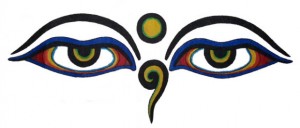
Ancient Egypt: Osiris’ Visionary Symbol
Interestingly, in the ancient Egyptian script, the hieroglyph denoting their deity Osiris incorporates an eye, as depicted below. This aligns with traditions in Hinduism and Buddhism where a spiritual god is symbolically represented by an eye.
Osiris The hieroglyphic representation for “Osiris” includes an eye motif
The Gaze of Horus In the annals of ancient Egypt, the ever-watchful eye is identified as the Eye of Horus or the Eye of Ra, and was intertwined with the symbolism of Wad-jet. Rooted in myriad myths, these symbols became beacons of safeguarding, rejuvenation, and healing. It’s believed that Horus’ left eye represented the moon, while his right mirrored the sun.
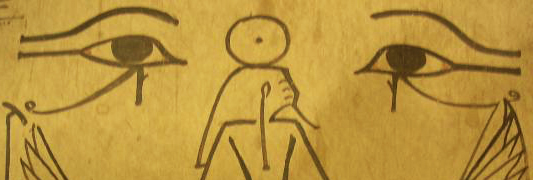
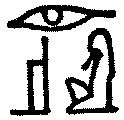
Horus, with his emblematic falcon head, is a sun deity, and the Eye of Horus is believed to be modeled after a lanner falcon’s eye, especially given the distinctive marking found below such a falcon’s eye.
The Eye of Horus: A Window to the Brain’s Consciousness?
Fascinatingly, when you scrutinize the design of the Eye of Horus, it bears a striking resemblance to a cross-section of the human midbrain, particularly where the thalamus, pineal, and pituitary glands reside. Often, the pineal gland is equated with the “third eye”, an emblematic center of spiritual insight and growth that individuals can cultivate.
The Eye of Horus, in its detailed design, appears to showcase the thalamus as the central eye, with the corpus callosum representing the brow, and the medulla oblongata (brain stem) and hypothalamus taking the form of the markings beneath. If this illustration indeed represents the brain’s architecture, while being referred to as the Eye of Horus, could it suggest that the ancient Egyptians perceived the midbrain as the nexus of consciousness, or possibly even a divine or “Horus consciousness”? Considering Horus’ role as a sun deity, which is symbolic of the universal Christ or spiritual essence, it prompts one to ponder if this indicates a person, when adequately primed, can align with this higher spiritual energy.
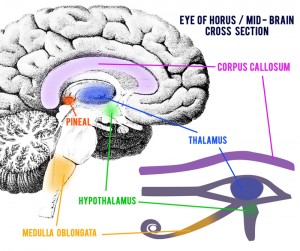
Middle East/Asia – The Protective Hamsa hamsa_hand_jewish Jewish Hamsa Symbol
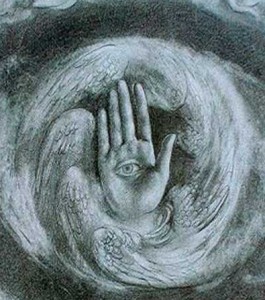
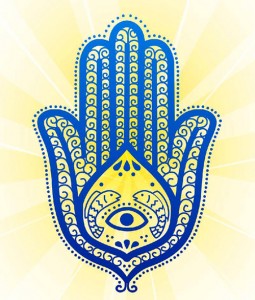
Across the Middle East, the symbol recognized as an eye embedded in the palm of a hand, predominantly the right one, has historical roots. Known by various names including Hamsa, Khamsa, and Hamesh, this symbol stands as a beacon of protection.
This symbol is commonly believed to shield one from the “evil eye,” a malevolent gaze rooted in envy that brings bad luck. Over the years, the Hamsa has evolved into a talisman symbolizing good fortune.
Artistic Interpretation from “The Divine World” by Kahil Gibran
The Hamsa holds significance in multiple cultures and religions. In the Islamic context, it’s referred to as the Hand of Fatima, and in Judaism, it’s named the Hand of Miriam. Further east in India, it takes the form of the Humsa Hand. Jainism integrates a variant of the Hamsa into its symbolism, incorporating the term ‘ahimsa’ (denoting non-violence) set within a wheel where the eye typically resides. This emblem, in its myriad forms, traces its antiquity over thousands of years, serving as protective amulets, charms, or even wall adornments. While its foundational roots might be anchored in ancient Mesopotamia – where the Hand of Ishtar stood as a divine shield – the original didn’t feature the now-characteristic eye.
An intriguing Christian-aligned depiction of the Hamsa can be found in the artwork titled “The Divine World” crafted by Kahlil Gibran. A revered figure from the early 20th century, Gibran, a Lebanese Maronite Catholic, was acclaimed for his multifaceted talents as a poet, artist, author, and philosopher.

Greek and Turkish Nazar: A Protective Gaze In regions of Greece and Turkey, a prominent talisman mirrors the essence of the Hamsa, recognized as the “Nazar”. Devoid of the hand symbol, this eye emblem, typically fashioned from blue glass, carries the purpose of shielding its possessor from malicious intents, specifically the “evil eye”.
Buddhist Protective Symbols: Buddha’s Vigilant Eye Drawing parallels from various cultures, Buddhism too employs an “eye of Buddha” charm to deter the negative influences of the evil eye.
Mysteries of Ancient America: The Rattlesnake Disc rattlesnake_disc_hamsa Image credit: Dennis Vesper

Historical remnants from the ancient Americas – encompassing Aztec, Mayan, and Native American traditions – sporadically feature the eye-hand emblem. However, the true connotations this symbol held for these civilizations remain speculative among historians.
Pictured to the right is a distinctive relic named “The Rattlesnake Disc”, discovered in the 19th century in Moundville, Alabama. Considering the intricate artistry, some historians postulate that it might symbolize a spiritual portal or gateway. This particular disc stands out due to its intricate detailing, signifying its high regard among the natives. Additionally, other artifacts excavated from the same site frequently showcase the hand-eye motif.
Ecuador’s Enigma: The Black Pyramid Amidst the dense forests of La Mana in central Ecuador, 1984 heralded the discovery of an unprecedented artifact dubbed the “Black Pyramid” among 300 other mysterious relics.
The origin and cultural context of these artifacts are shrouded in mystery. Intriguingly, some items, like the hooded King Cobra figure, seem out of geographical context as cobras aren’t indigenous to South America.
The enigmatic Black Pyramid, carved from dark stone, showcases an apex eye and is adorned with gold, outlining 13 layers of “bricks”. Under ultraviolet light, these gold embellishments emit a radiant glow. The design uncannily resonates with Egypt’s Great Pyramid of Giza, located over 7,000 miles away. Furthermore, its similarity to the pyramid-eye emblem on the US Great Seal and $1 bill is startling. 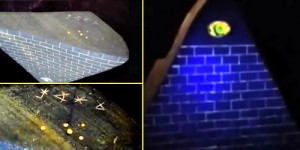
Connecting to Ancient Egypt, the cobra artifact in the collection evokes imagery of the Pharaohs’ forehead adornments, synonymous with the protective Eye of Horus/Ra and Wad-jet. Positioned at the mid-brow, this symbolism denotes the ascension of energies and the awakening of dormant psychic abilities, akin to the capabilities of the third eye.
Mysterious Artifacts of Ecuador: Timeless Symbols of Cosmic Significance? The enigmatic relics uncovered in La Mana, Ecuador, challenge conventional historical narratives. Their inability to be accurately dated deepens the mysteries they hold. The presence of pre-Sanskrit inscriptions, particularly on the underside of the Black Pyramid, attests to their ancient origins. With markings resonating with the Orion constellation, akin to the Giza pyramids, the artifacts suggest a universal reverence for these celestial patterns. The potential translation, “the son of the creator comes,” hints at profound spiritual or prophetic significance.
These meticulously crafted objects reflect their creators’ reverence, though their interpretations remain obscured to modern observers.
Ancient Greece: The All-Seeing Sun Ancient Greek texts often equated the sun with an all-seeing eye, a symbol of divine omniscience. The “Hymns of Orpheus” beautifully illustrate this sentiment, depicting the sun as an ever-watchful eye, illuminating, protecting, and bringing justice to the world. This portrayal resonates with descriptions found in the ancient Rig Veda, suggesting a cross-cultural universality in the way the sun, as an eye, was perceived.
Christianity: Divine Omniscience and Enlightenment Christian texts also embrace the motif of the all-seeing eye, weaving it into teachings on spiritual enlightenment and divine vigilance. Jesus’ reference in Matthew 6:22 underscores the significance of spiritual vision: a singular focus (or “single eye”) leading to enlightenment or illumination. The cited passages from Psalms and Proverbs reinforce the idea of an omnipresent God, whose gaze is ceaseless, overseeing both good and evil deeds.
This recurring theme across diverse cultures and religions highlights a shared human fascination with vision, both literal and metaphorical. The eye, whether representing the sun, divinity, or consciousness, serves as a powerful symbol of knowledge, vigilance, and enlightenment.
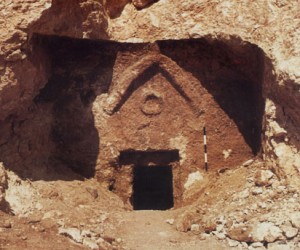
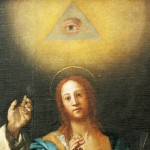
The “Jesus tomb,” more officially known as the Talpiot Tomb, was indeed discovered in 1980 in Jerusalem. This tomb contained ossuaries (stone boxes used to hold the bones of the deceased) with inscriptions that some believe may indicate the family of Jesus of Nazareth. This claim, however, is a matter of considerable debate and has not been conclusively proven.
The symbol you’re referring to on the tomb is an interesting feature. It is a chevron and a circle, which some people have likened to the all-seeing eye or the eye in the pyramid, although it’s essential to approach such parallels with caution. Context is crucial, and this symbol might have had a different meaning in the 1st-century Jerusalem context than the Eye of Providence has in later Christian or Masonic traditions.
Regarding the “Eye of Providence” or the “All-Seeing Eye” in Christianity, it is a symbol that indeed became more prevalent in Christian art during the Renaissance and beyond. By the 16th and 17th centuries, the Eye of Providence, often enclosed in a triangle (representing the Trinity), became a common motif in Christian art, symbolizing God’s omniscience.
The depiction in the mentioned painting from Luke 24: 13-32, where Jesus dines with two disciples after his resurrection, known as the Supper at Emmaus, might show the Eye of Providence as a representation of God’s ever-present gaze and the divine revelation that the disciples experience upon recognizing the risen Christ.
However, it’s important to differentiate between the symbols and their adaptation over time. While the all-seeing eye within a triangle has specific connotations in Christianity, its connection with a pyramid (as seen on the U.S. dollar bill, for example) has distinct Masonic and deistic influences that are separate from its Christian origins.
Please note that the two examples mentioned below are older than the founding of the Bavarian Illuminati in 1776, even though Freemasonry had already existed in England and Europe by that time. It is possible that masonic influence led to the use of these symbols on these cathedrals, but it was not until around 1797 that masons began using the eye-in-pyramid symbol. Another instance of the prominent use of this symbol is on the front facade of the Hartegbrugkerk Church in Leiden, the Netherlands, which was built in 1835-36. The Latin words “Hic Domus Dei est et Porta Coeli” translate to “This is the House of God and the Gateway to Heaven.”

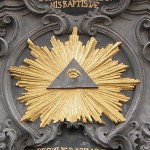
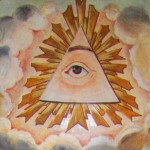
Tommy Truthful of Truth Mafia.com created this image using AI. Feel free to share, but please tag my website, truthMafia.com.
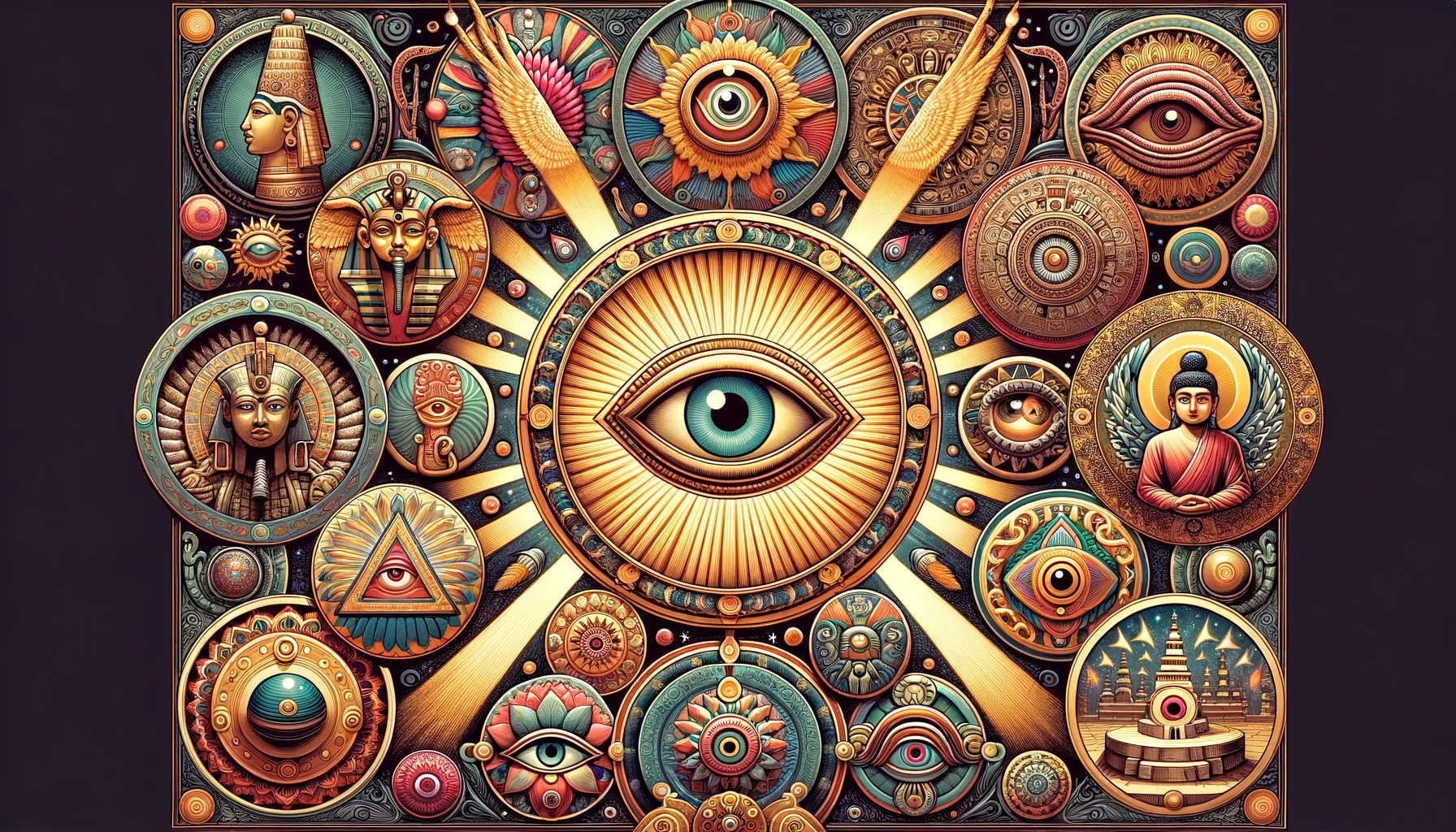
THE SATANIC HIP HOP INDUSTRY EXPOSED: FOLLOW UP (PART 9)
 The text discusses various artists including Yeet, MC Cabolino, G Herbo, Ali Lottie, Babe Rexe and Suki Hana, showing symbols like the all-seeing eye and freemasonic tattoos, raising questions about their connection to these symbols. It prominently mentions Suki Hana, who spoke regretfully about signing a contract with the music industry, metaphorically saying she “sold her soul to the devil”, and has lost her passion for making music.
The text discusses various artists including Yeet, MC Cabolino, G Herbo, Ali Lottie, Babe Rexe and Suki Hana, showing symbols like the all-seeing eye and freemasonic tattoos, raising questions about their connection to these symbols. It prominently mentions Suki Hana, who spoke regretfully about signing a contract with the music industry, metaphorically saying she “sold her soul to the devil”, and has lost her passion for making music.



